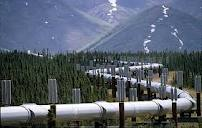New Canadian pipeline route aims to avoid environmentally fragile areas
 TransCanada Corp has submitted a new route plan designed to avoid the most sensitive ecological areas in Nebraska, as the company pursues state and federal approval for its controversial Keystone XL pipeline.
TransCanada Corp has submitted a new route plan designed to avoid the most sensitive ecological areas in Nebraska, as the company pursues state and federal approval for its controversial Keystone XL pipeline.In a filing with the state’s Department of Environmental Quality, the company said the new route should allay concerns raised by the original pipeline plan which traversed the Sandhills region, considered a fragile environmental zone.
The primary goal of the Nebraska reroute effort is to avoid the area defined by the NDEQ as the Sandhills region,” the report says.
In December, the Nebraska environment department provided TransCanada with maps that identified the Sandhills region, saying the company needed to know the extent of the area to avoid.
TransCanada is hopeful the state review will clear the way for a permit from the U.S. State Department to commence construction early in 2013 of the 2,700-kilometre route, which would carry up to 800,000 barrels per day of oil sands bitumen crude from Alberta and northern U.S. to the huge refining hub on the U.S. Gulf Coast.
The Obama administration postponed a decision on the permit last fall, saying the company needed to reroute the pipeline to avoid the Sandhills region. In January, the State Department rejected TransCanada’s initial submission after being forced by the Republican-led Congress to make a decision before the new route was completed.
The State Department said it was not rejecting the Keystone XL project on its merits and invited the company to reapply.
The reroute “is in keeping with the commitment that TransCanada made to Nebraskans in 2011, and respects the direction that has been provided by the NDEQ,” TransCanada spokesman Shawn Howard said.
“Once again, this process is back in the hands of Nebraskans, who overwhelmingly support the safe construction and operation of this critical North American energy infrastructure project … . The need for the real jobs that Keystone XL will create has not diminished, nor has the desire to reduce America’s dependence on foreign oil.”
However, a prominent Nebraska opposition group said Thursday that the pipeline route remains unacceptable, and accused the state government of being prepared to “rubber stamp” TransCanada’s new route.
“TransCanada’s preferred route still crosses the Sandhills and still crosses the Ogallala Aquifer,” Jane Kleeb, executive director of Bold Nebraska, said in an interview. “Anyone that has set foot in the area they are proposing at the entry point knows its Sandhills.”
Ms. Kleeb said she has no confidence in the current Nebraska governor, Dave Heineman, to block the project, but remains hopeful that President Barack Obama will protect the Sandhills and aquifer, should he win re-election in November.
You can return to the main Market News page, or press the Back button on your browser.

